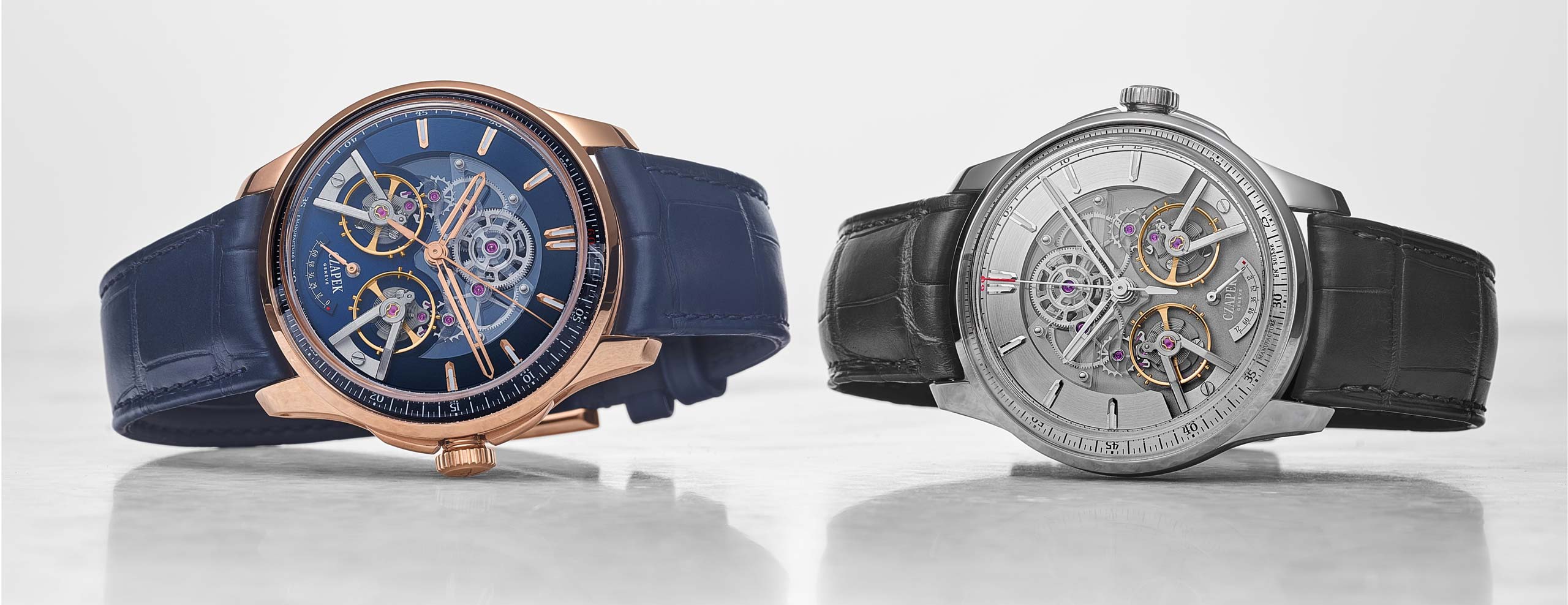News
Geneva Watch Days 2023: Czapek Complicité with Double Balance Wheels
News
Geneva Watch Days 2023: Czapek Complicité with Double Balance Wheels
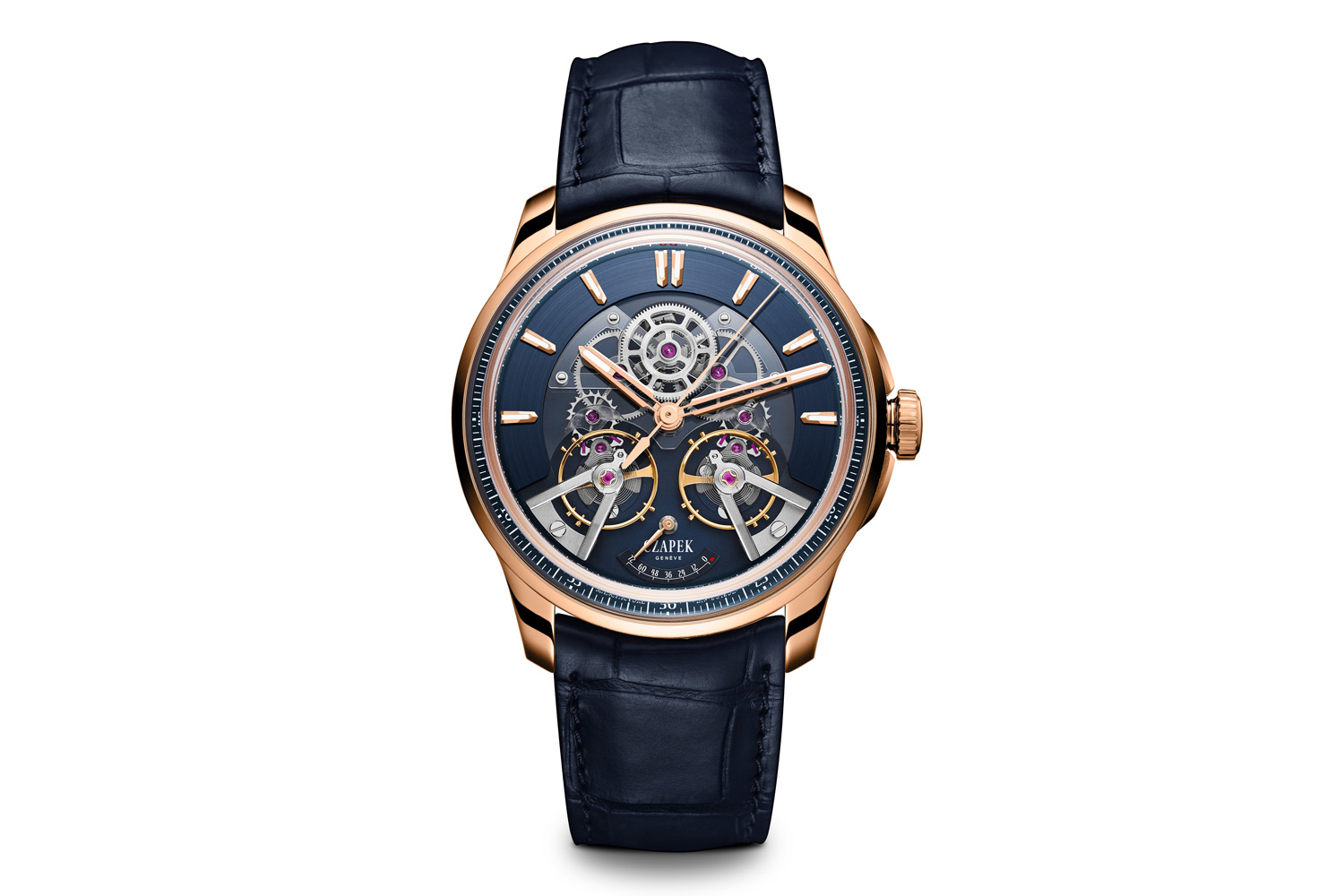
The Complicité in luxe blue and gold
Collab with Bernhard Lederer
Interestingly, the new Complicité has been developed in collaboration with Bernhard Lederer, an independent watchmaker renowned for his elaborate approach to chronometry. Mr Lederer is most famous for his double escape-wheel escapement and double remontoir wristwatch. Mr. Lederer has leveraged his expertise and engaged in an exchange of ideas with Czapek regarding the design of the double balances in the new Complicité.
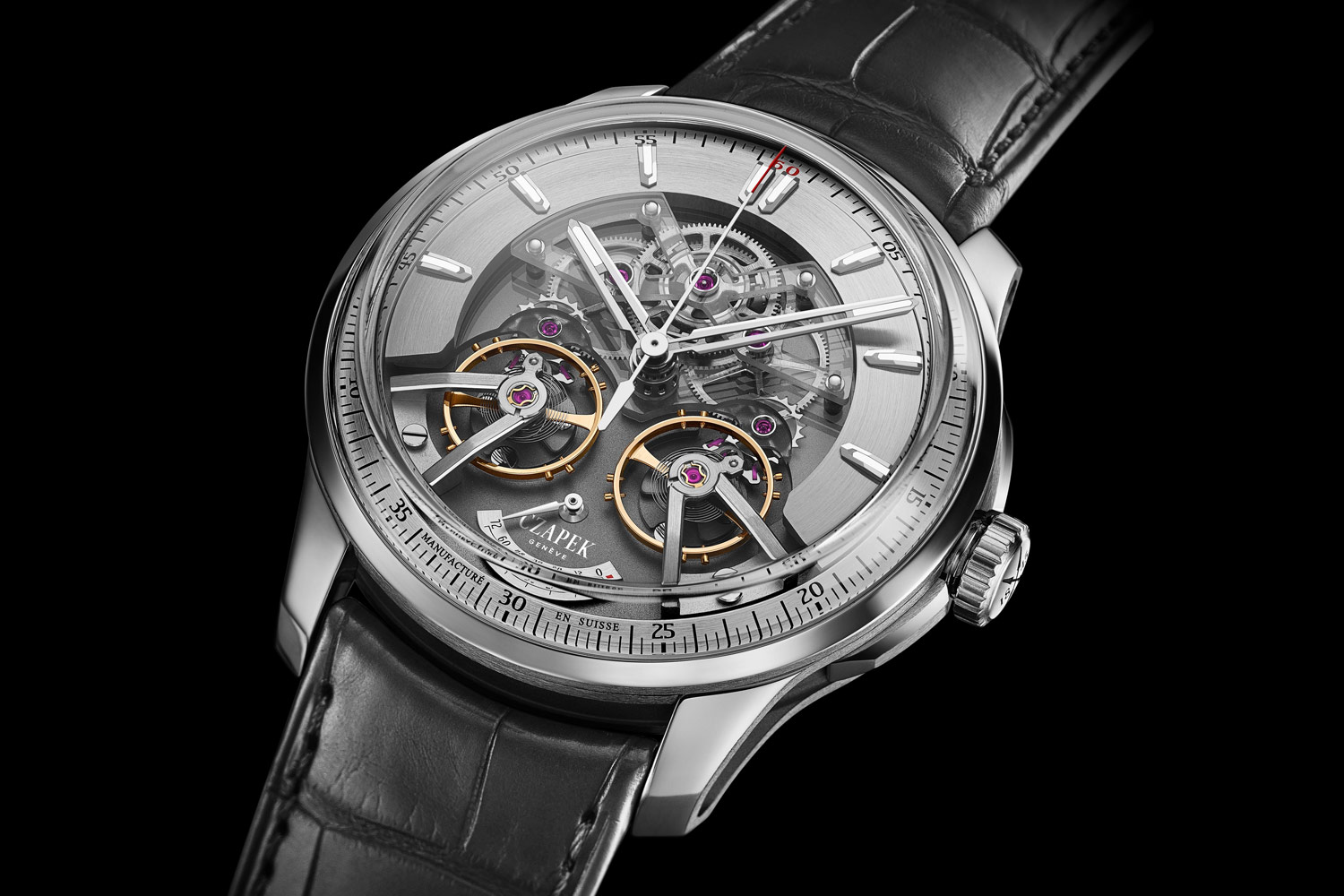
The Complicité Stardust in an all-silver palette
Symmetrical dial
To show more of the movement’s details, the dial has been skeletonized. The central part has been entirely hollowed out, leaving a fan-shaped ring around the dial to house the hour markers. This allows the final section of the gear train, starting with the differential located at 12 o’clock, to be fully visible from top. Furthermore, observation from the side is possible due to the use of transparent sapphire bridges, enabling the visibility of multiple layers of wheels.
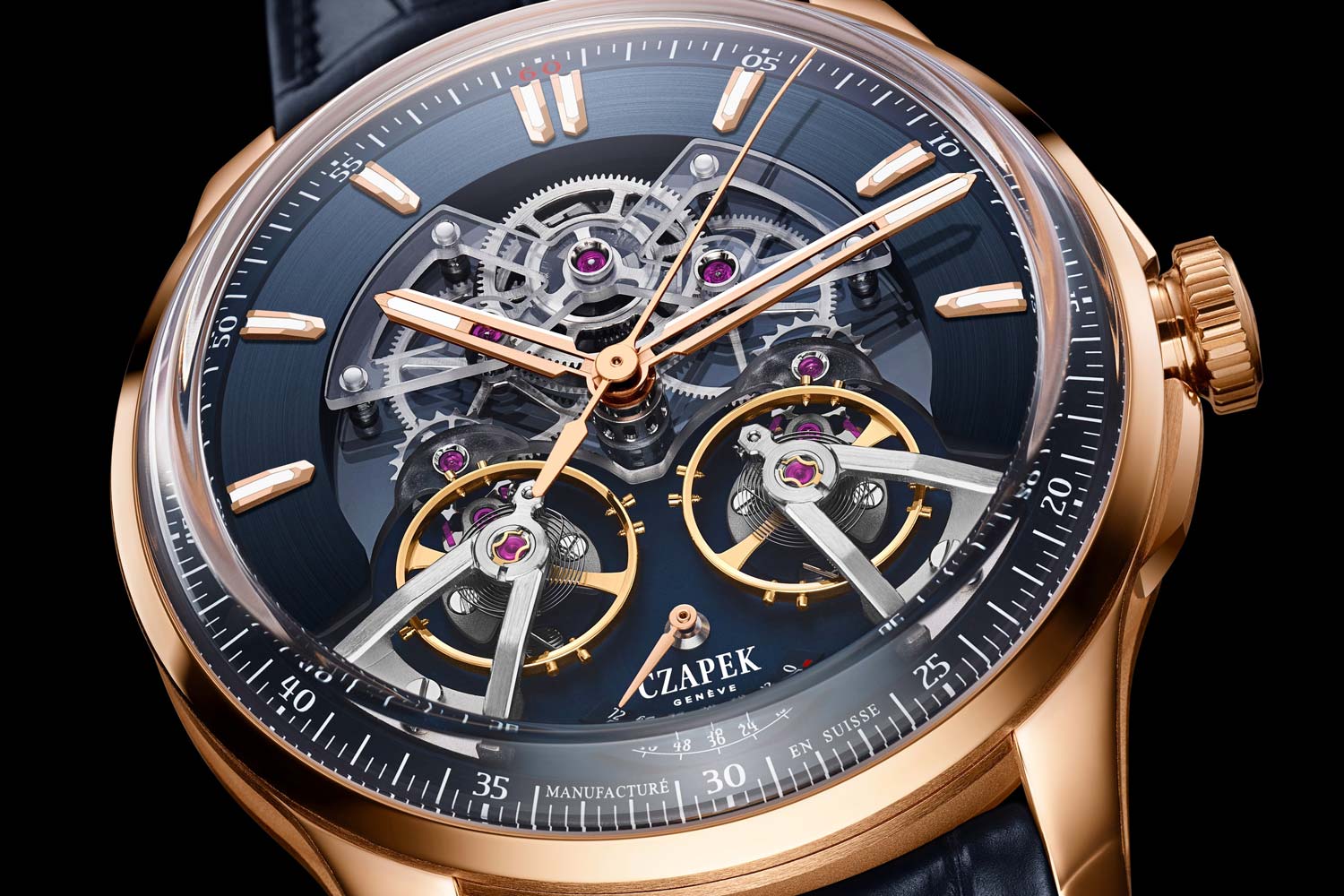
A open-worked dial to showcase the differential and balances
Why double balances?
Let’s first take a look at what the balances do. Each balance wheel oscillates at its unique rate and carries its own margin of error. As a result, this feedback impacts the entire gear train, determining the speed at which the barrel (double barrels in this case, but linked in series and functioning as a single power source) should unwind – whether rapidly or gradually. However, there’s only a single power source and gear train. So, how is it possible for these two balances to oscillate independently and differently?
Imagine having a device that can average out the timekeeping rates of the two balances before providing feedback to the gear train about how fast the barrels should unwind. This is where a differential comes into play. A differential is a set of gears capable of taking a single input and allowing for two distinct rotational speeds as an effect. This mechanism is what enables a car to navigate turns, as the inner and outer wheels of a car rotate at slightly varying speeds, necessitating a differential to coordinate their movement.
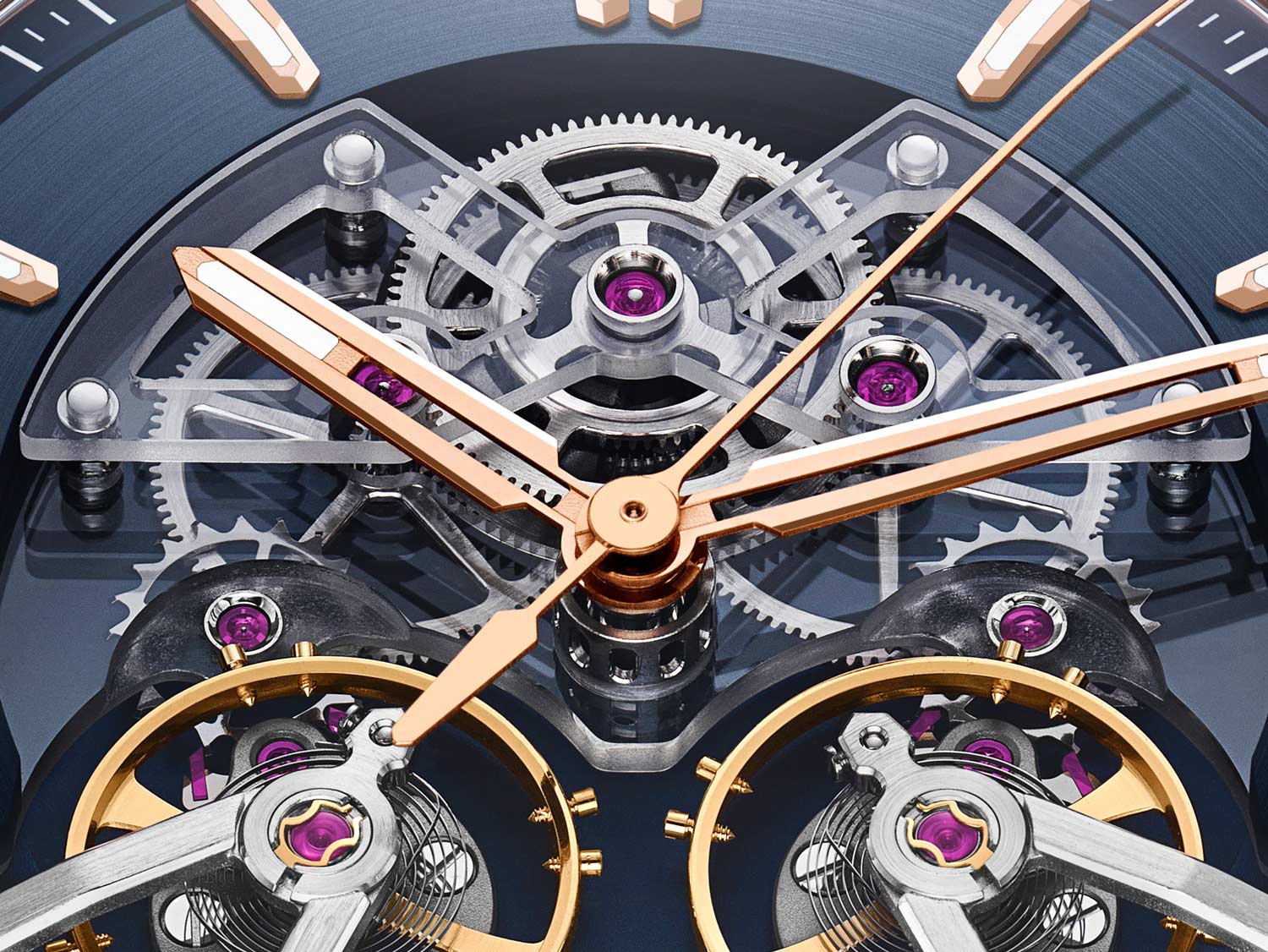
The differential and double balance wheels
This singular “outcome” is helpful to minimize error. For instance, if one balance oscillates at +2 seconds per day while the other oscillates at -2 seconds per day, then the single “outcome” should ideally equate to +0 seconds per day. In the worst scenario, where both balances share the same error, such as +2 seconds per day, the “outcome” would remain consistent at +2 seconds per day. However, to achieve a better rate output, one balance wheel is typically adjusted to run slightly slower or faster than the other.
It’s important to note that power flows from the barrel to the balance wheel and not the other way around. Nonetheless, the oscillation of the balance wheel exerts a backward impact on the entire gear train, governing the pace at which the barrel unwinds. Thus, in this context, the term “outcome” signifies a form of feedback within the gear train and does not imply the reversal of power flow.

The Calibre 8 with a clean and geometrical layout
Czapek Place Vendôme Complicité Specs and Price
Functions: Hours, minutes, seconds, and power reserve indicator
Case: 41.8 x 14.8 mm, 18k white or rose gold, water-resistant to 50 m
Strap: Alligator strap with white or rose gold folding buckle
Limited edition: 50 pieces in each metal
Price: CHF 85,000 or USD 100,000




